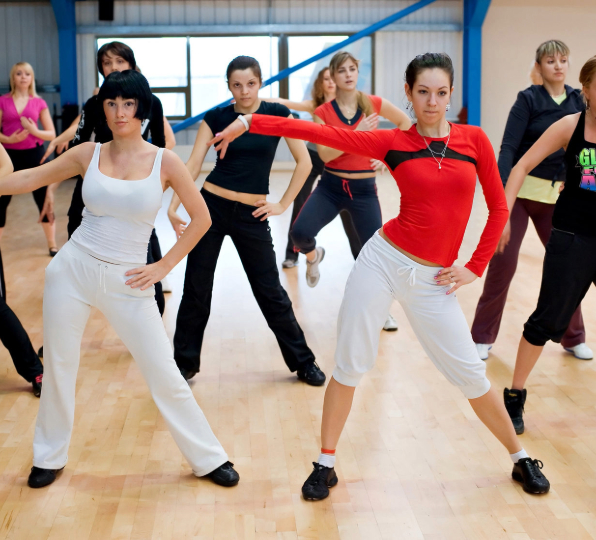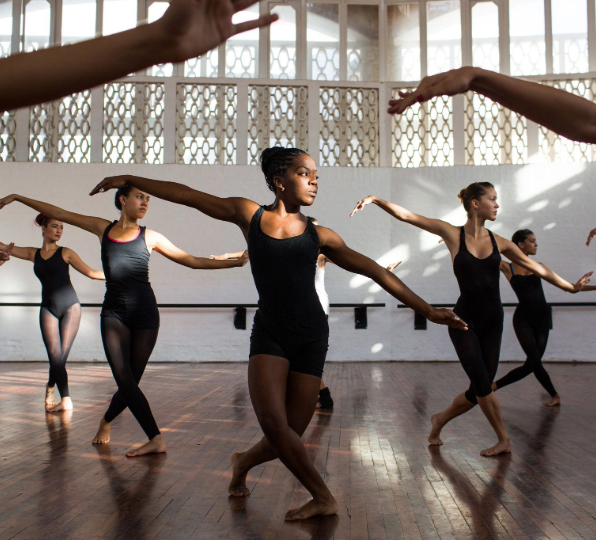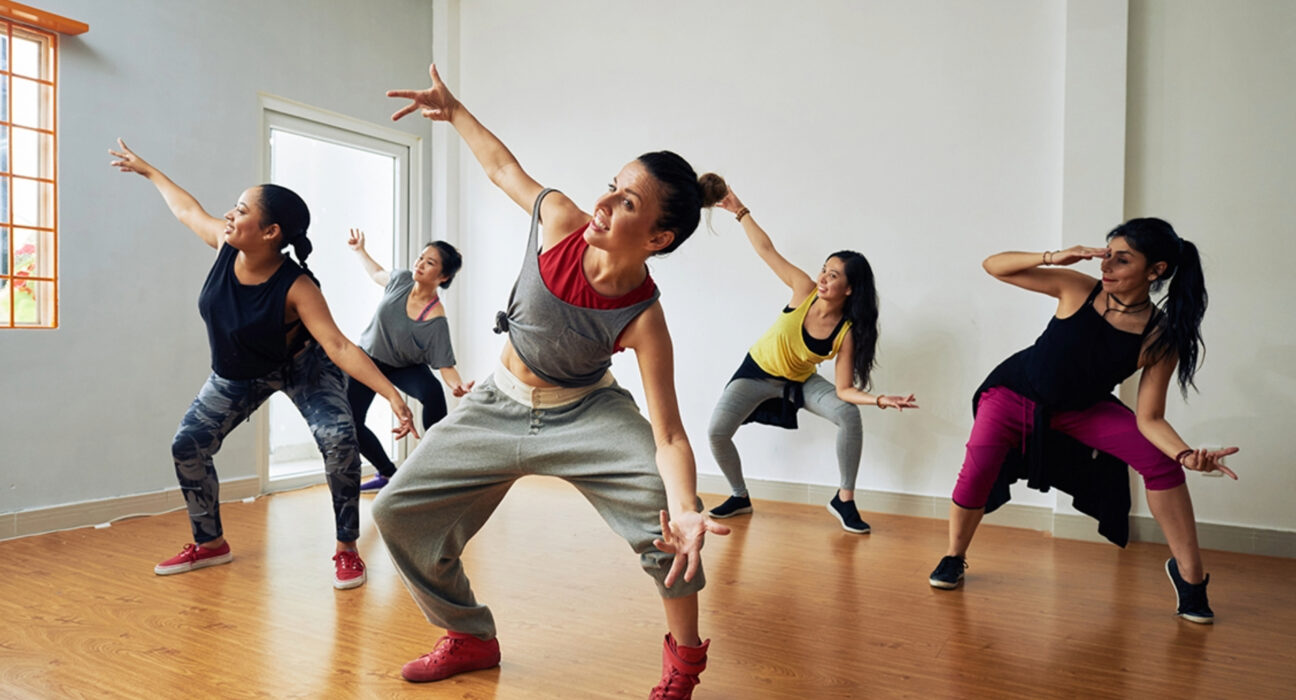Introduction:
Conventional weightlifting and running exercises may not be to everyone’s taste when it comes to weight loss. Thankfully, dancing offers a delightful and successful substitute. Dancing is not only a very enjoyable way to lose those extra pounds, but it also has many positive effects on both physical and mental health. This blog post will discuss the benefits of adding 30 minutes of dancing to your daily schedule in order to aid in weight loss.
1. Burns Calories
Dancing, beyond being a source of joy and self-expression, is a dynamic and engaging form of exercise that offers numerous health benefits, including calorie burning. Whether you’re grooving to the rhythm of salsa, breaking it down with hip-hop moves, or gliding across the dance floor with elegance in ballroom styles, dancing engages multiple muscle groups, elevates heart rate, and promotes calorie expenditure.
The number of calories burned during dance sessions varies depending on several factors, including the intensity and duration of the activity, your body weight, and the style of dance. However, on average, individuals can expect to burn between 200 to 600 calories per hour of dancing. High-energy dance styles like Zumba, aerobics, or hip-hop can significantly elevate calorie burn due to their fast-paced movements and constant engagement of large muscle groups. On the other hand, slower-paced dances such as ballroom or ballet may still offer a moderate calorie burn while focusing more on technique, balance, and precision.
The dynamic nature of dancing, which often involves a combination of aerobic and anaerobic movements, contributes to its effectiveness in calorie burning. Aerobic dance movements, characterized by continuous, rhythmic patterns, help elevate heart rate and stimulate fat burning, while anaerobic movements, such as jumps, lifts, and turns, engage muscles in short bursts of high-intensity activity, further enhancing calorie expenditure and metabolic rate.
Moreover, dancing offers a full-body workout, engaging muscles from head to toe, including the core, legs, arms, and back. As you move through different dance sequences, you activate various muscle groups, which not only burns calories during the activity but also contributes to muscle toning, strength building, and overall conditioning over time.
In addition to its calorie-burning benefits, dancing provides a fun and enjoyable way to stay active and maintain a healthy lifestyle. Unlike traditional forms of exercise, which can feel repetitive and monotonous, dancing allows for creativity, self-expression, and social interaction, making it easier to stick to a regular fitness routine.
2. Improves Cardiovascular Health
Dancing isn’t just a fun way to express yourself—it’s also an excellent cardiovascular workout that can benefit your heart health in numerous ways. Whether you’re salsa dancing, doing the cha-cha, or breaking it down with some hip-hop moves, dancing gets your heart rate up and engages your cardiovascular system, making it stronger and more efficient over time.
When you dance, you’re engaging in continuous movement that requires sustained effort from your muscles and cardiovascular system. This sustained activity elevates your heart rate, increases blood flow throughout your body, and improves circulation. As a result, your heart becomes more efficient at pumping blood, and your blood vessels become more flexible and responsive, which is essential for maintaining optimal cardiovascular health.
Regular dancing can also improve your endurance and stamina, allowing you to dance for longer periods without feeling fatigued. This increased endurance not only enhances your dance performance but also translates to everyday activities, making tasks like climbing stairs or carrying groceries easier and less taxing on your heart.
Furthermore, dancing can have a positive impact on various cardiovascular risk factors. Research has shown that regular dancing can help lower blood pressure, reduce LDL (bad) cholesterol levels, and increase HDL (good) cholesterol levels. By improving these risk factors, dancing can help reduce the risk of developing cardiovascular diseases such as heart disease, stroke, and hypertension.
Additionally, dancing has been linked to improved heart rate variability (HRV), which is a measure of the variation in time intervals between heartbeats. Higher HRV is associated with better overall heart health and a lower risk of cardiovascular events. Dancing may help improve HRV by promoting relaxation, reducing stress, and enhancing autonomic nervous system function.
Overall, incorporating dance into your fitness routine is an enjoyable and effective way to improve your cardiovascular health. Whether you’re dancing solo, with a partner, or in a group class, the rhythmic movements, upbeat music, and positive energy of dancing can provide a fun and rewarding cardiovascular workout that benefits both your body and your heart in the long run. So put on your dancing shoes, turn up the music, and get ready to dance your way to better heart health!
3. Builds Muscle Tone
Dancing isn’t just about having fun and grooving to the music—it’s also a fantastic way to build muscle tone and strength. Whether you’re busting a move on the dance floor or following along with a choreographed routine, dancing engages a wide range of muscle groups throughout your body, helping you achieve a leaner and more toned physique.
One of the key benefits of dancing is its ability to target multiple muscle groups simultaneously. Depending on the style of dance you’re doing, you may be engaging muscles in your legs, core, arms, and back, as well as smaller stabilizing muscles throughout your body. For example, dances like salsa or tango often involve quick footwork and hip movements that activate the muscles in your legs, glutes, and core, while dances like ballet or contemporary may incorporate graceful arm movements and poses that work your upper body and core.
Dancing also involves a variety of dynamic movements, such as jumps, twists, lunges, and squats, which help challenge and strengthen your muscles in different ways. These movements require both strength and coordination, making dancing a full-body workout that can help you develop better muscle tone and definition over time.
In addition to toning your muscles, dancing can also help improve your overall muscle endurance and stamina. As you dance, you’re constantly moving and engaging your muscles for an extended period, which can lead to increased muscular endurance over time. This improved endurance not only enhances your dance performance but also carries over to other activities, making everyday tasks feel easier and less fatiguing.
Furthermore, dancing can be a great way to incorporate strength training into your fitness routine without using traditional gym equipment. Instead of lifting weights or using machines, you’re using your own body weight and resistance from the movements of the dance to build strength and tone your muscles. This makes dancing a convenient and accessible option for individuals looking to improve their muscle tone and overall fitness level.
4. Boosts Metabolism
Dancing isn’t just a fun way to move—it’s also a powerful tool for boosting metabolism and supporting weight loss goals. When you dance, you engage multiple muscle groups, elevate your heart rate, and increase your energy expenditure, all of which contribute to a faster metabolism and more efficient calorie burning.
One of the primary ways that dancing boosts metabolism is through its cardiovascular benefits. When you dance, whether it’s a high-energy Zumba class or a graceful ballet routine, you’re getting your heart rate up and increasing blood flow throughout your body. This cardiovascular activity not only burns calories during the dance session but also elevates your metabolism for hours afterward, leading to continued calorie burning even after you’ve stopped dancing.
Additionally, dancing can help build lean muscle mass, which plays a key role in boosting metabolism. As you engage in dance movements, you’re not only burning calories but also toning and strengthening your muscles. Muscle tissue is more metabolically active than fat tissue, meaning that the more muscle you have, the more calories your body burns at rest. By incorporating dance into your fitness routine, you can increase your muscle mass and metabolic rate, leading to more efficient calorie burning throughout the day.
Furthermore, dancing has psychological benefits that can support a healthy metabolism. When you dance, your body releases endorphins and other feel-good hormones, which can help reduce stress, boost mood, and regulate appetite and cravings. By reducing stress levels and improving mood, dancing can help prevent emotional eating and promote healthier food choices, making it easier to maintain a balanced diet and support weight loss efforts.
5. Enhances Coordination and Balance
Dancing isn’t just about moving to the beat—it’s also a fantastic way to enhance coordination, balance, and agility. Whether you’re salsa dancing, doing the cha-cha, or grooving to your favorite tunes, each step and movement requires precise coordination and balance, challenging your body in new and exciting ways.
One of the key components of dancing is rhythm, which involves syncing your movements with the tempo of the music. As you dance, you must coordinate your steps, arm movements, and body positioning to match the rhythm, requiring precise timing and coordination. Over time, practicing these rhythmic movements can help improve your coordination skills, as your body becomes more adept at synchronizing its movements with the music.
In addition to coordination, dancing also challenges your balance and agility. Many dance styles involve intricate footwork, spins, and turns, which require you to maintain stability and control while moving dynamically. By practicing these movements, you can enhance your balance and proprioception, which is your body’s awareness of its position in space. Improving your balance and agility through dance can not only enhance your performance on the dance floor but also translate to better balance and coordination in everyday activities.
Furthermore, dancing engages multiple muscle groups simultaneously, including those in your core, legs, and arms, which helps improve overall muscle coordination and control. As you execute different dance moves, you’re constantly adjusting and refining your movements to maintain balance and stability, leading to improved coordination and motor skills over time.
Enhancing coordination and balance through dance isn’t just beneficial for your physical fitness—it can also have significant implications for your overall health and well-being. By improving your coordination and balance, you can reduce the risk of falls and injuries, especially as you age. Additionally, mastering new dance moves can boost confidence and self-esteem, leading to a greater sense of self-assurance both on and off the dance floor.
6. Relieves Stress and Boosts Mood
Dancing isn’t just about moving your body—it’s also a powerful tool for relieving stress and boosting mood. Whether you’re dancing alone in your room or hitting the dance floor with friends, the rhythmic movements and infectious beats of dance can have a profound impact on your mental well-being.
One of the key ways in which dancing relieves stress is through its ability to release tension and promote relaxation. As you move to the music, you’re able to let go of the worries and stresses of daily life, allowing your body and mind to unwind and recharge. The repetitive, rhythmic movements of dance can help calm the nervous system, reducing levels of cortisol, the stress hormone, and promoting feelings of calm and relaxation.
Moreover, dancing engages the body’s natural feel-good chemicals, such as endorphins and serotonin, which are released during physical activity and contribute to a sense of happiness and well-being. The act of dancing itself can be incredibly uplifting, as you lose yourself in the music and express yourself freely through movement. Whether you’re dancing with joy or releasing pent-up emotions through movement, the experience can leave you feeling lighter, happier, and more at peace.
In addition to its stress-relieving benefits, dancing can also serve as a form of creative expression and self-discovery. Through dance, you have the opportunity to express your emotions, thoughts, and experiences in a nonverbal way, allowing you to connect with yourself on a deeper level and gain insight into your innermost feelings. Whether you’re dancing through joy, sorrow, or anger, the act of expressing yourself through movement can be incredibly cathartic and empowering.
Furthermore, dancing provides a sense of connection and community, especially when done in a group setting. Dancing with others allows you to share in the joy of movement and music, fostering a sense of camaraderie and belonging. Whether you’re dancing with friends, family, or strangers, the shared experience of dance can create lasting bonds and memories, enhancing your overall sense of well-being.
7. Provides Social Interaction
Dancing isn’t just a solo activity—it’s also a wonderful way to connect with others and enjoy the benefits of social interaction. Whether you’re taking a group dance class, hitting the dance floor at a club, or attending a social dance event, dancing provides ample opportunities to socialize, make new friends, and strengthen existing relationships.
One of the great things about dancing is that it brings people together from all walks of life. In a group dance class, you’ll find people of all ages, backgrounds, and fitness levels coming together to learn new moves and have fun. This diversity creates a sense of camaraderie and inclusivity, making everyone feel welcome and accepted.
Social dancing is also a fantastic way to meet new people and expand your social circle. Whether you’re dancing with a partner or mingling with other dancers, you’ll have the opportunity to strike up conversations, exchange smiles, and build connections with like-minded individuals. The shared experience of dancing creates an instant bond, making it easy to connect with others and forge new friendships.
In addition to providing social interaction, dancing can also boost your motivation and accountability when it comes to exercise. When you have friends or classmates to dance with, you’re more likely to stay committed to your workouts and push yourself to do your best. Plus, the supportive atmosphere of a group dance class or social dance event can help you stay motivated and inspired to reach your weight loss goals.
Furthermore, dancing in a social setting can enhance your enjoyment of exercise and make it feel more like play than work. Instead of dreading your workouts, you’ll look forward to dancing with friends, listening to great music, and having a blast on the dance floor. This positive association with exercise can make it easier to stick to your weight loss goals in the long run and maintain a healthy lifestyle.


Conclusion:
With its myriad physical, mental, and social benefits, dancing for 30 minutes daily can be a fun and effective way to accelerate your weight loss journey. Whether you prefer salsa, hip-hop, ballet, or Zumba, there’s a dance style for everyone to enjoy. So put on your favorite tunes, let loose, and dance your way to a healthier, happier you.












